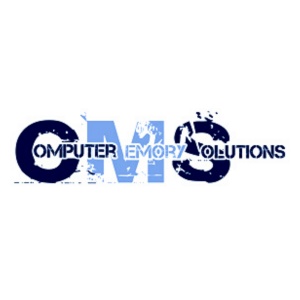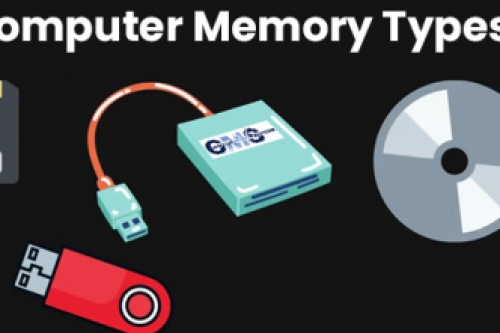Our computers have various types of memories and the inventions are not ending regarding these. Getting familiarity with all of them is greatly beneficial especially if you are interested in improving the memory of your computer.
Before getting deep into the topic, we first describe Computer Memory Solutions (CMS). CMS is one of the famous 15-year-old sellers of different storage devices and memory solutions such as RAM, SSDs, and HDDs with all ranges and memories.
We are going to briefly describe the different computer memory types and the significance and great range of functionality that can be achieved from them.
RAM vs Computer Memory: What’s the difference?
What do we mean by “Computer Memory”? Is it something specific or are we talking about RAM? There are numerous ways in which we can distinguish between Computer Memory and the term “RAM” that many of us might be familiar with:
Generality: Computer memory is not just RAM and when we are talking about memory, we refer to something more general. Memory is taken to mean various types such as primary, secondary, and cache memory. But Random Acess Memory (RAM) is something very specific and is only a subtype of primary memory along with ROM.
Purpose: Primary memory is generally the personal memory of the computer that the computer first accesses. RAM is highly temporary to use since when you shut down your PC or laptop, it is automatically removed from there. While Computer Memory includes several permanent storage devices that are externally attached to the PC and save memory even when your computer is shut down.
Storage Ranges: RAM has a capacity that is far less than the storage devices since it is meant to be temporary. The capacities generally range from 2 GB to 32 GB normally but it may be even more than that up to 256 GB. The permanent storage methods that are included within the term “Computer Memory” have memories ranging from 200 GB to 1 TB or even more. It depends on the need of the user.
Types of Computer Memory:
We now turn to the several types of computer memory that are in use today:
Cache memory: Cache memory is a very useful type of memory that acts as an intermediate between CPU and RAM. Some frequently-held data and instructions are held by them so that they immediately reach the CPU. It is very beneficial since it speeds up the whole process and slower main memory is accessed with a relatively better speed. It comes with three levels with L1 having a size from 8 KB to 64 KB while L2 and L3 are higher than that.
Primary Memory: Primary memory is of two types, RAM and ROM. These are the types of memory that are directly accessed by the processor using the data bus. These are manufactured using semiconductor devices or integrated circuits (ICs).
When we talk about RAM, it is further divided into Dynamic Ram (DRAM) and Static RAM (SRAM). SRAM is the static RAM and, therefore, has lower access time and higher speed while the dynamic RAM has a higher access time but lower speed.
On the other hand, we have Read-Only Memory (ROM) which is not temporary and its memory contents remain even after you turn off your computer. The ROM storage capacity ranges from 4 to 8 MB. It is further divided into PROM, EPROM, and EEPROM. They differ concerning the modification and the time this could be erased and reused.
Secondary Memory: Depending on the usage, our computer may require external storage to store the data. Hard Disk Drives (HDDs), Floppy Disks, Solid State Drives (SSDs), and Universal Serial Buses (USBs) are some popular widely used types of secondary memory. They have different uses and, therefore, different sizes.
Talking about Hard Disk Drives, they are an improvement in the older Floppy Disks and provide main storage for most of the PCs used today. They can range from 250 GB to 2 TB at maximum although it can be even greater or smaller than that. The normal ranges vary between these.
Solid State Drives (SSDs) are very similar to HDDs because they provide room for memory like HDDs. SSDs have another benefit in that they improve the computer’s performance and speed. They have very fast read/write speed and a PC with an SSD will boot very quickly as compared to a PC with HDD. They are very helpful for gaming and business purposes. They are in this way somewhat similar to the RAMs and also provide the benefit of HDDs. They can also range from 120 GB to 2 TB.
USB is a storage device in which you can store a wide range of data. You can plug it into the PC, store some data in it and use it to transfer to some other devices. USB drives could range from 1 GB to 256 GBs. There are USB ports in almost all the PCs that are available today, even mobile phones and smartphones contain them. They are highly useful for storing data.
Conclusion:
This subject of memories in a computer is vast and describing it with too much detail is difficult. We have provided a brief overview of what kinds of computer memory do we have. It can be seen that computer memories have a great role to play not only in storing data but in greatly empowering the performance, speed, and efficiency of computers. If a person wants to take care of his/her PC, it is vital to consider different memory choices.
For this purpose, we strongly recommend using the Computer Memory Solutions (CMS) that provide a wide range of memory solutions such as SSDs, HDDs, and RAMs. It has solutions for Desktop memory, Laptop memory, and Server Memory with almost all the ranges. It also gives a warranty of up to 3 years for Desktop and Laptop memory solutions and a lifetime warranty for Server memory. You can get SSD drives with a 3-year warranty too.
Read the original post here - Computer Memory Types
















